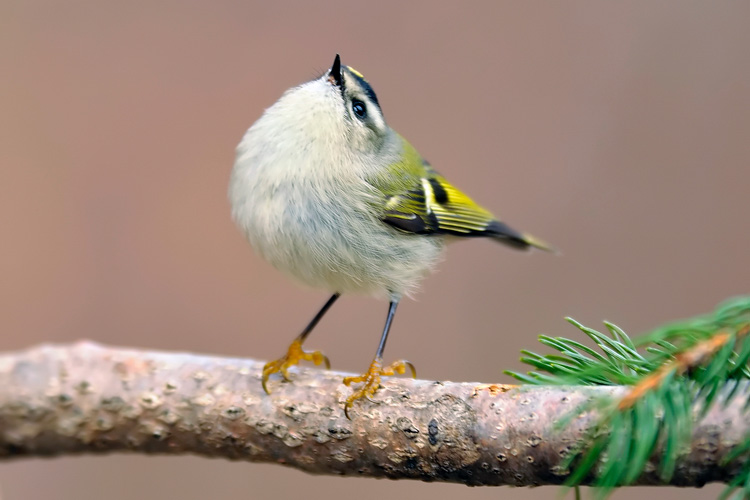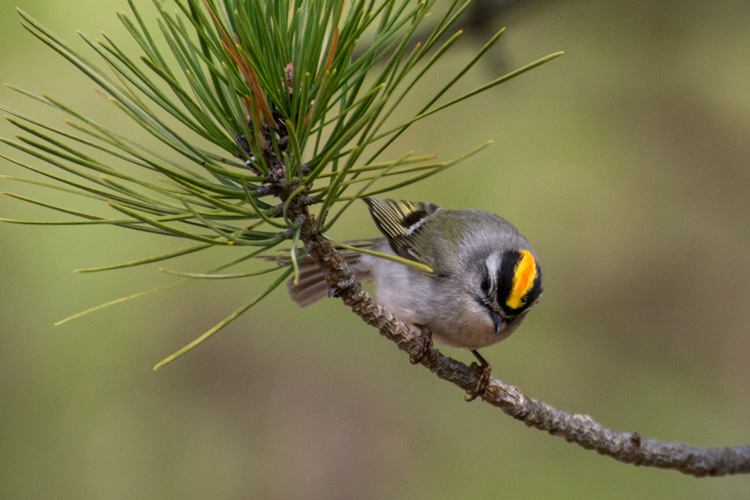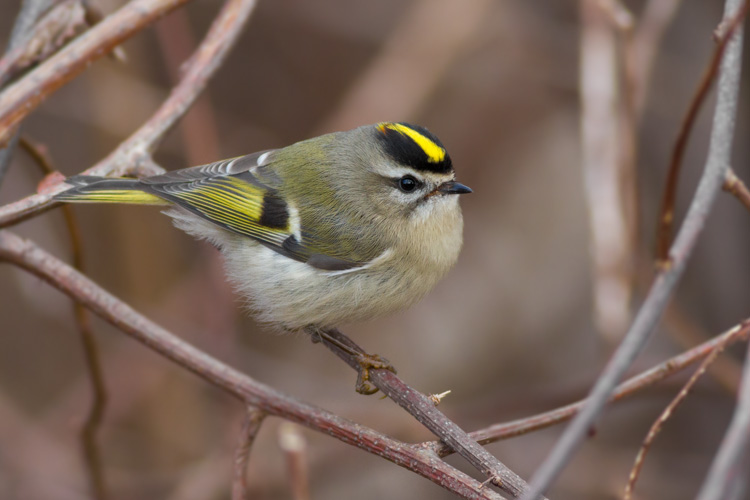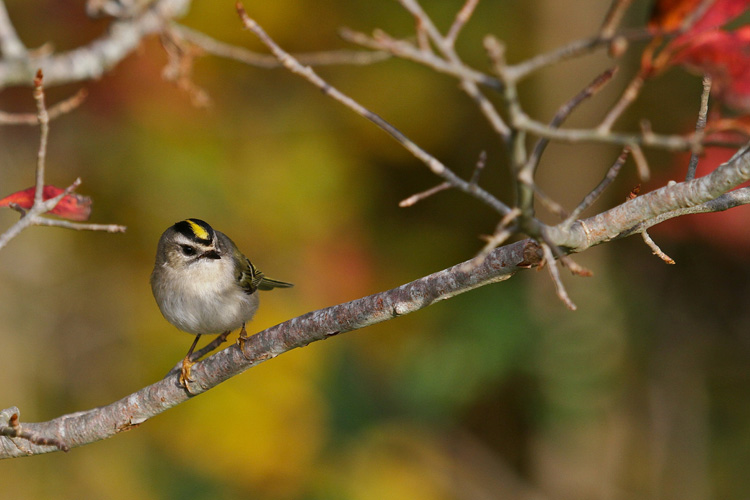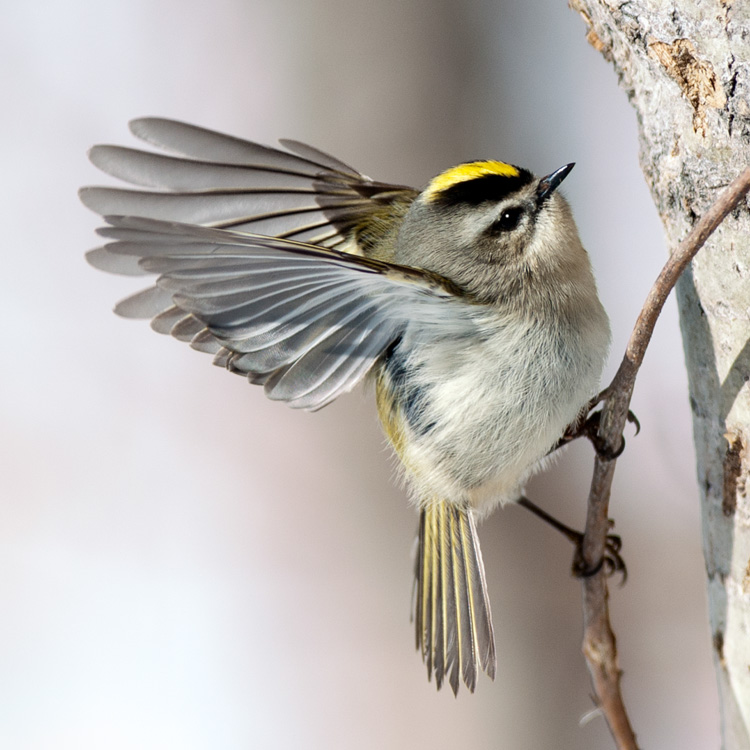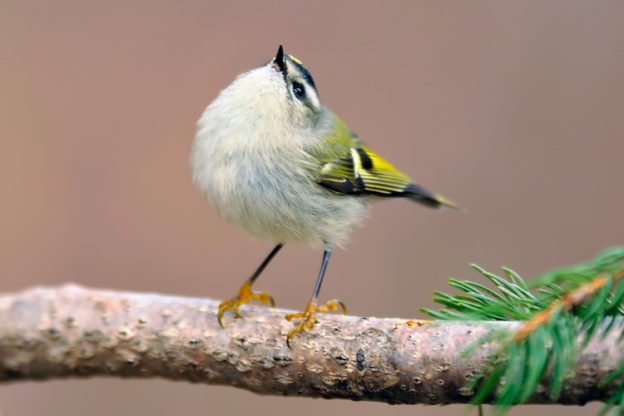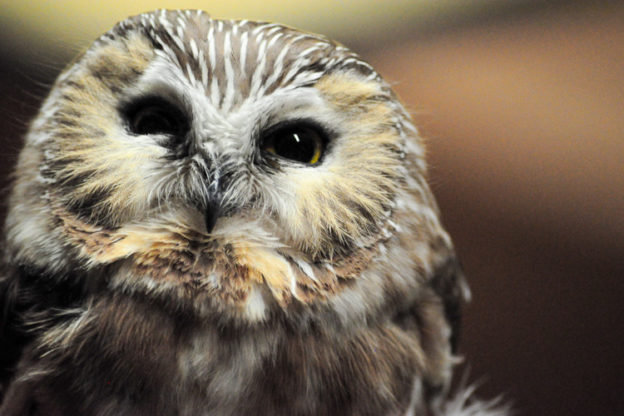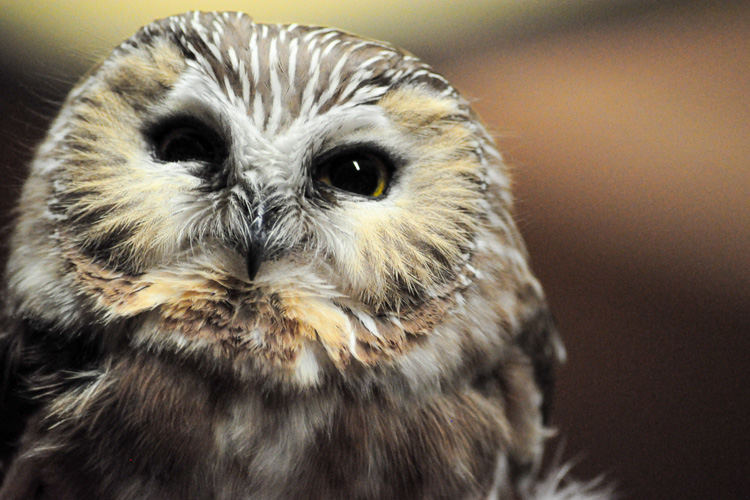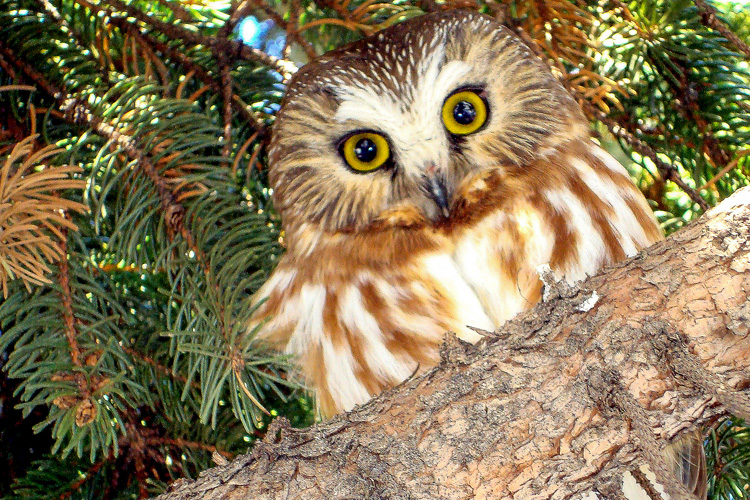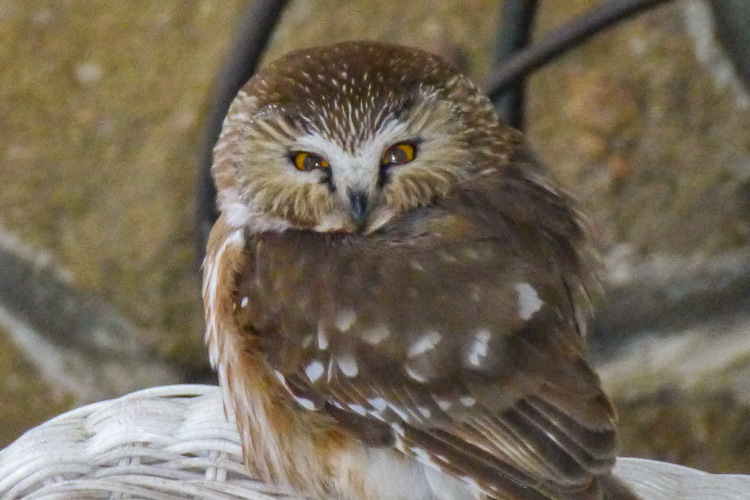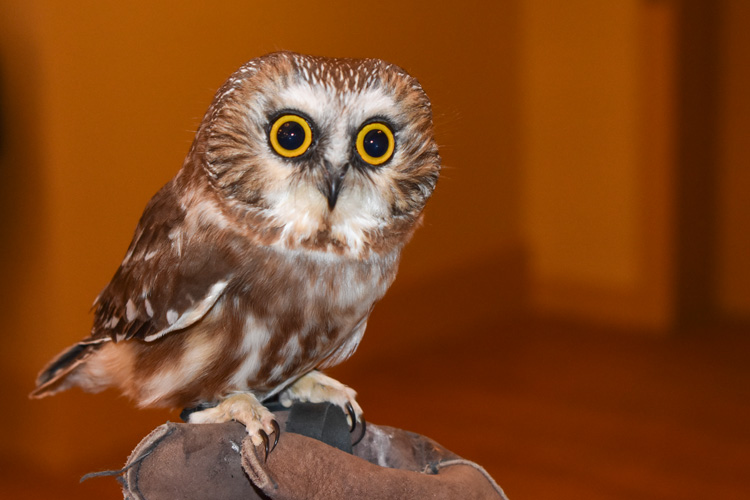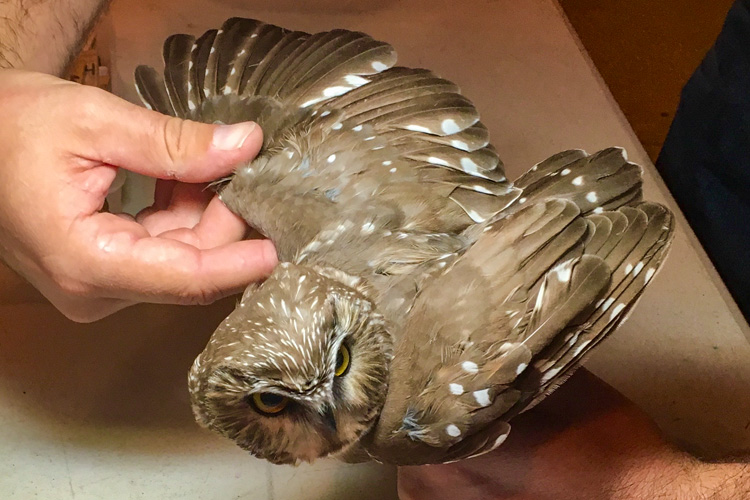Small but mighty, kinglets are barely bigger than hummingbirds, weighing less than half an ounce, and yet they are still capable of surviving in remarkably cold environments, in some regions overwintering in places where nighttime temperatures can fall below 0°F. Their preference for the upper canopy of thick stands of tall conifers, especially spruce and fir, coupled with their diminutive size, makes them difficult to spot, but fall migration is likely your best chance.
Both Golden-crowned and Ruby-crowned kinglets are migrating from northern forests to their wintering grounds and passing through Massachusetts this time of year, but only individuals of the golden variety tend to linger beyond the fall migration period. You’ll need a keen ear to pinpoint the very piercing call of the male Golden-crowned Kinglet, which is so high-pitched that some older birders find that they lose the ability to hear the highest notes as they age.
Here are five photos of “kingly” Golden-crowned Kinglets from our annual Picture This: Your Great Outdoors photo contest.
